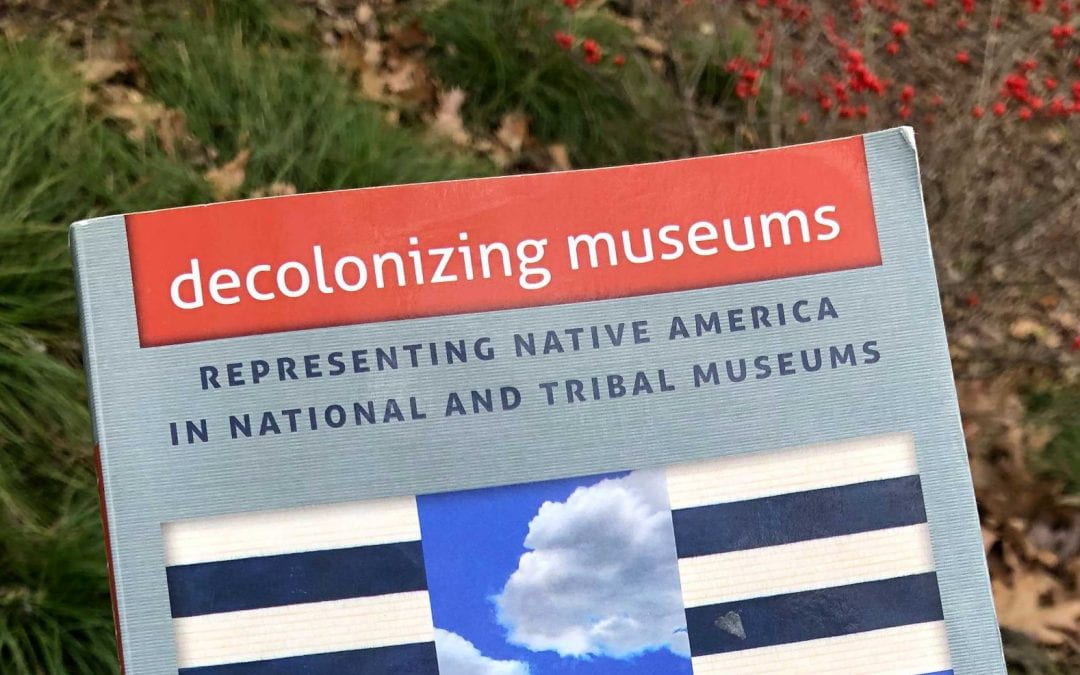November 2020 Museum Reads pick –
Decolonizing Museums: Representing Native America in National and Tribal Museums by Amy Lonetree
Museums have historically been sites of colonization, expressing the power imbalances between the oppressor and the oppressed through collection and exhibition. Native American history and their material culture has been taken from them and then presented without their insight or knowledge. Amy Lonetree, an Indigenous scholar and museum professional, advocates for museums to be decolonizing spaces that allow Indigenous people to be a part of the exhibition of their history and cultural objects. Lonetree outlines that a decolonizing museum must give priority to the perspective of Native Americans in the presentation of their history, be sources of information that counter the stereotypes of Native Americans, provide knowledge and memories with Native and non-Native people, and most importantly, tell the real history of colonization and its impact on Native communities that has continued to the present day and caused unresolved trauma and grief. She uses this framework to evaluate the work of three museums that exhibit Indigenous material culture, the Smithsonian’s National Museum of the American Indian, the Millie Lacs Indian Museum in Minnesota, and the Ziibiwing Center of Anishinabe Culture and Lifeways in Michigan.
Why Decolonizing Museums?
November is Native American Heritage Month. As a Museum that houses many Native American materials, it is important to be aware of and reflect on the unfortunate history surrounding the treatment of Native Americans that museums have contributed to. The University of Arkansas Museum has repatriated items according to the Native American Graves Protection and Repatriation Act (NAGPRA), but still holds certain repatriated materials of the Quapaw and Caddo Nations at the tribes’ discretion for security and environmental needs. The Museum also includes the Indigenous owners of the materials they house in all discussions of presentation and use of their collections, do not use these materials without permission from the tribes, and are in continual contact with leaders. To learn more about the University of Arkansas Museum’s collection of Native American materials and the process of their repatriation, visit this blog post.
This book would be a great read for those interested in museums and their complex history, as well as those interested in Native Americans and their role and portrayal in museums, as well as the workings of NAGPRA.
My Thoughts on Decolonizing Museums
As someone who hopes to work in the museum field in the future, this book was incredibly interesting and insightful. It is hard to wrestle with the distressing history of something I love so much, but it is an important reminder that museums and their staff are not infallible.
The book also presents a lot of new museum thinking when it comes to how history is told, especially by privileging the voice of those whose history it is and moving away from purely object-based exhibits. The idea of creating an exhibit based on a concept and then finding objects to complement that narrative is an appealing contrast to the traditional idea of exhibits as very object focused. By discussing three different museums and their approach to Indigenous history and culture exhibits, readers are able to get a grasp of the best methods and the pitfalls of display of Native American materials, while also learning about the values, traditions, and cosmologies of different Native tribes.
More information about the book here.
Author Bio: Emily Snyder is a junior Honors College Fellow majoring in history and Latin American and Latino Studies and minoring in Spanish and Anthropology. Originally from Bentonville, AR, Emily is involved on campus as a member of the University of Arkansas Museum Student Advisory Council, an Honors College Ambassador, and a member of Phi Alpha Theta. After college, Emily hopes to pursue a graduate degree in museum and archival studies, and eventually work to connect underrepresented communities with museum services.
